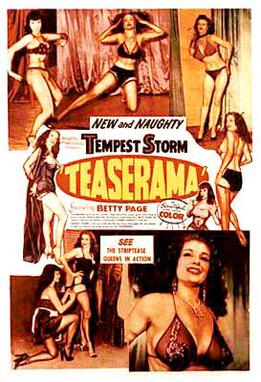
A fetish model is a model who models fetish clothing or accessories that augment their body in a fetish-like manner or in fetishistic situations. Fetish models do not necessarily work exclusively in that form of modeling.
Bondage pornography is the depiction of sexual bondage or other BDSM activities using photographs, stories, films or drawings. Though often described as pornography, the genre involves the presentation of bondage fetishism or BDSM scenarios and does not necessarily involve the commonly understood pornographic styles. In fact, the genre is primarily interested with the presentation of a bondage scene and less with depictions of sexuality, such as nudity or sex scenes, which may be viewed as a distraction from the aesthetics and eroticism of the sex scenario itself.
John Alexander Scott Coutts, better known by the pseudonym John Willie, was an artist, fetish photographer, editor and the publisher of the first 20 issues of the fetish magazine Bizarre, featuring his characters Sweet Gwendoline and Sir Dystic d'Arcy. Though distributed underground, Bizarre magazine had a far-reaching impact on later fetish-themed publications and experienced a resurgence in popularity, along with fetish model Bettie Page, beginning in the 1970s.

Bettie Mae Page was an American model who gained notoriety in the 1950s for her pin-up photos. She was often referred to as the "Queen of Pinups": her long jet-black hair, blue eyes, and trademark bangs have influenced artists for generations. After her death, Playboy founder Hugh Hefner called her "a remarkable lady, an iconic figure in pop culture who influenced sexuality, taste in fashion, someone who had a tremendous impact on our society".

Irving Klaw, self-named the "Pin-up King", was an influential American merchant of sexploitation, fetish, and Hollywood glamour pin-up photographs and films. Like his predecessor, Charles Guyette, who was also a merchant of fetish-themed photographs, Klaw was not a photographer, but a merchandiser of fetish art imagery and films. His great contribution to the world was to commission fetish art and sponsor illustrative artists, and to indirectly promote the legacy of Charles Guyette and John Willie. Irving Klaw is a central figure in what fetish art historian Richard Pérez Seves has designated as the "Bizarre Underground," the pre-1970 fetish art years.

Marie Frances Van Schaack, known professionally as Lili St. Cyr, was a prominent American burlesque dancer and stripper.

Gretchen Mol is an American actress and former model. She is known for her role as Gillian Darmody in the HBO series Boardwalk Empire (2010–2014). She also appeared in the films Rounders (1998), Celebrity (1998), The Thirteenth Floor (1999), The Notorious Bettie Page (2005), in which she played the title character, 3:10 to Yuma (2007), and Manchester by the Sea (2016).

Lili Anne Taylor is an American actress. She came to prominence with supporting parts in the films Mystic Pizza (1988) and Say Anything... (1989), before establishing herself as one of the key figures of 1990s independent cinema with starring roles in Bright Angel (1990), Dogfight (1991), Household Saints, Short Cuts, The Addiction, Cold Fever, I Shot Andy Warhol, Girls Town, Pecker (1998), and A Slipping-Down Life (1999). She is the recipient of four Independent Spirit nominations, winning once in the category of Best Supporting Female. Her accolades also include a Golden Globe, an NBR Award, a Volpi Cup, a Sant Jordi, a Golden Space Needle, a Chlotrudis Award, an SDFCS Award, a Sundance Special Jury Prize, and a Fangoria Chainsaw Award.

Mary Harron is a Canadian filmmaker and screenwriter, and former entertainment critic. She gained recognition for her role in writing and directing several independent films, including I Shot Andy Warhol (1996), American Psycho (2000), and The Notorious Bettie Page (2005). She co-wrote American Psycho and The Notorious Bettie Page with Guinevere Turner.

Guinevere Jane Turner is an American actress, screenwriter, and film director. She has written such films as American Psycho and The Notorious Bettie Page and played the lead role of the dominatrix Tanya Cheex in Preaching to the Perverted.

Bettie Page: Dark Angel is a 2004 film directed and produced by Cult Epics founder Nico B.

Linnea Eleanor "Bunny" Yeager was an American photographer and pin-up model.

American Psycho is a 2000 horror film directed by Mary Harron, who co-wrote the screenplay with Guinevere Turner. Based on the 1991 novel of the same name by Bret Easton Ellis, it stars Christian Bale as Patrick Bateman, a New York City investment banker who leads a double life as a serial killer. Willem Dafoe, Jared Leto, Josh Lucas, Chloë Sevigny, Samantha Mathis, Cara Seymour, Justin Theroux, and Reese Witherspoon appear in supporting roles. The film blends horror and black comedy to satirize 1980s yuppie culture and consumerism, exemplified by Bateman.

Christine Vachon is an American film producer active in the American independent film sector.

Tegan Lauren-Hannah Murray is an English actress. She played Cassie in Skins and Gilly in the HBO fantasy series Game of Thrones (2012–2019), for which she has been nominated along with her castmates for three Screen Actors Guild Awards. Her film roles include the 2014 musical romance film Stuart Murdoch's God Help The Girl which won her a Special Jury Prize at the Sundance Film Festival, and 2015 drama film Jeppe Rønde's Bridgend for which she won the Tribeca Film Festival for Best Actress Award.

Teaserama is a 1955 American low-budget sexploitation film directed by Irving Klaw. It follows the performance of a burlesque show.

Varietease is a 1954 American burlesque film and the first such directed by Irving Klaw. According to its plot, the iconic pin-up model Bettie Page performs a burlesque show alongside Lili St. Cyr, Chris La Chris, Vicki Lynn, Bobby Shields, and others.
Movie Star News was a New York City landmark and is a collection of vintage pin-up, bondage, and Hollywood publicity photos amassed over the course of 73 years by Irving Klaw, his sister Paula Klaw and nephew Ira Kramer– nearly 3 million images and 250,000 negatives, including 1,500 prints of Bettie Page, known as the queen of pin-ups.

American film, television, and stage actress and director Sarah Paulson began her acting career in New York City stage productions before starring in the short-lived television series American Gothic (1995–1996) and Jack & Jill (1999–2001). Her other television work includes Deadwood (2005), Studio 60 on the Sunset Strip (2006–2007), and Cupid (2009). In 2011, Paulson began starring in the FX anthology series American Horror Story, playing various characters over the show's 10 seasons (2011–present). For her performances in the series, she received five Primetime Emmy Award nominations and won two Critics' Choice Television Awards. In 2016, she portrayed real life prosecutor Marcia Clark in The People v. O. J. Simpson: American Crime Story, for which she earned her a Primetime Emmy Award and the Golden Globe Award. In 2020, Paulson appeared in the FX miniseries Mrs. America, and began starring as Nurse Mildred Ratched in the Netflix psychological thriller series Ratched (2020–present).
Kevin Shulman is a producer, writer, and director of music videos and feature films.
















